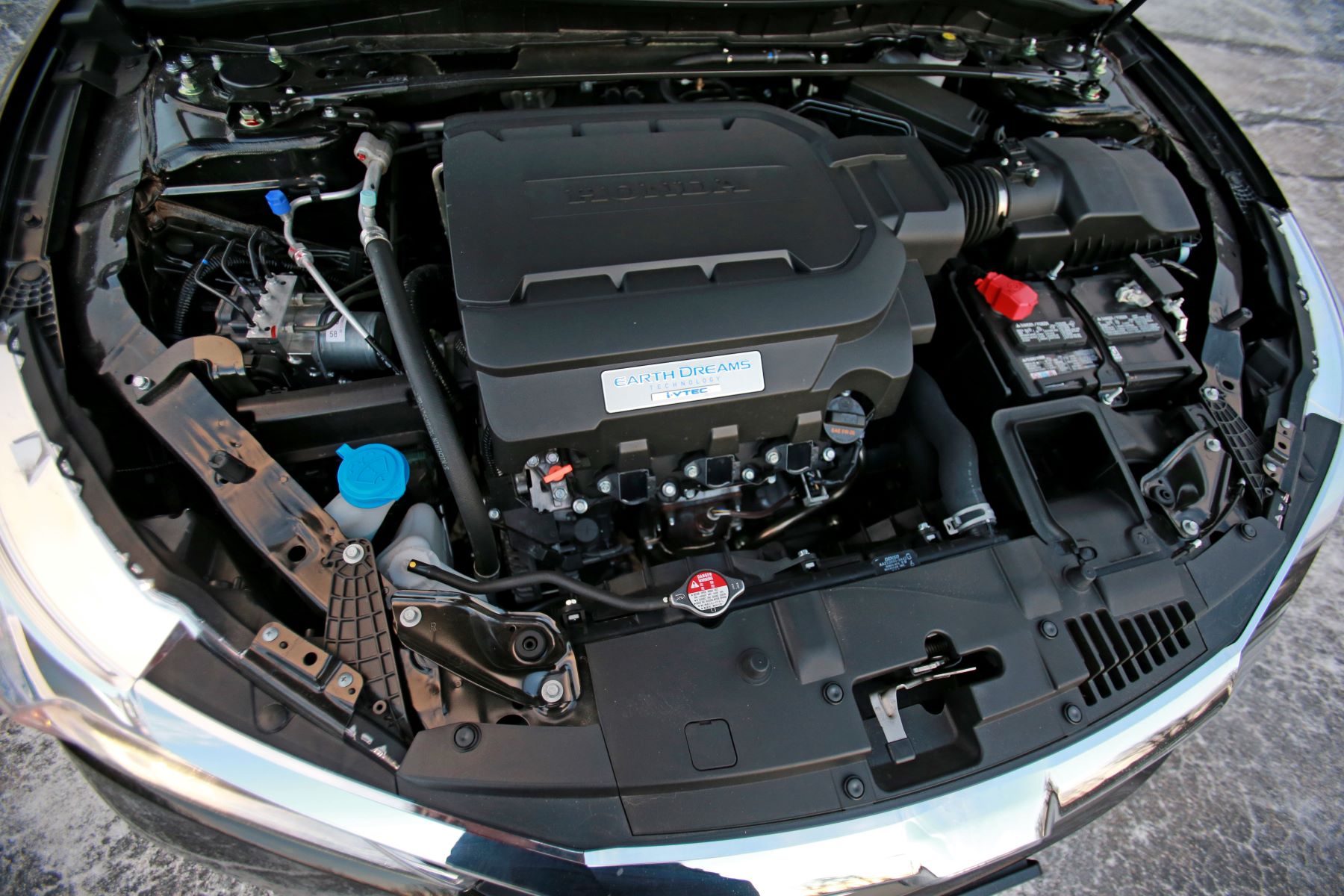Honda’s 3.5-liter V6 engine, the J35, has been used in Honda models over the last 24 years. The J35’s first iteration, the J35A, was first used in 1998 for Honda Odyssey models. While they have been in use for decades, Honda V6 engines do have some problems.
How many models use the Honda 3.5-liter V6 engine?
There have been four primary types of J35 engines: the J35A, J35S, J35Z, and J35Y. For a further explanation of the problems, TuningPro focused on the A, Z, and Y engine families. There are more variants within each engine family, but for more on engine problems, it’ll stick to those three Honda V6 engines.
The J35A engines have been used on seven Honda or Acura models: the Honda Odyssey (from 1998-2010), Acura MDX (2001-2006), Honda Pilot (2003-2008), Acura RL (2005-2008), Acura TL Type-S (2007-2008), and the Honda Ridgeline (2006-2008). Power ranges from 210 horsepower for the Odyssey to 286 for the RL and TL.
The J35Z engines, also known as the “Earth Dreams” engine, were used on seven models: the Pilot (2006-2008 front-wheel drive only and 2009-2015), Ridgeline (2009-2014), Honda Accord (2008-2012), Acura RDX (2013-2018), Acura TSX (2010-2014), TL (2009-2014), and Odyssey (2011-2017). The primary change for the J35Z engine is the use of Variable Cylinder Management (VCM). Horsepower for these Honda V6 engines ranged from 244 to 280.
The J35Y engines are the newest form of the Honda 3.5-liter V6 engine. They have been used on nine models since 2013: the Accord (2013-2017), Acura RLX (2014-2020), Honda Legend (2014-2020), MDX (2014-2020), TLX (2015-2020), Pilot (since 2016), Ridgeline (since 2017), Odyssey (since 2018), and Honda Passport (since 2019). The J35Y engines have direct fuel injection for better fuel economy, performance, and emissions. Horsepower ranges from 278 to 310.
Overall, these Honda V6 engines have been used for years. In that time, Tuning Pro states three major problems have come up:
1. VCM problems
The VCM technology used in the J35Z engines is meant to improve emissions and fuel economy. Under low loads, the engine shuts down three cylinders. However, that’s led to multiple problems.
Excessive oil consumption is a common problem for 2008 Honda Accord models. According to Car Complaints, the 2008 Honda Accord recorded 265 engine complaints with the National Highway Traffic Safety Administration. In 2011, Honda provided a software update to solve the oil consumption problem. However, many class-action lawsuits were still pending.
The V6 engine problems also stem from a problem with the gaskets. Tuning Pro states the gaskets are known to develop oil leaks. That’s a problem because oil can easily leak onto the alternator. The Honda V6 engine’s VCM can also cause engine mounts, spark plugs, and torque converter problems.
There are multiple ways to fix this Honda V6 engine problem. Tuning Pro points to aftermarket products and disabling VCM overall as ways to help.
2. Timing belt wear
Wear on the Honda V6 engine timing belt is not as common as VCM issues. There are no major flaws or faults with the timing belt. Tuning Pro explains the Honda 3.5-liter V6 is an interference engine. That means it’s more powerful and efficient, but there’s overlap where the valves and pistons are. If a timing belt snaps or slips, they can collide, which is bad.
This is not a significant problem but can come up after six to eight years or near 100,000 miles. Symptoms of this problem are power loss, weird engine noises like ticking or slapping, misfires, and a check engine light.
The timing belt on a Honda V6 engine is an inexpensive part to repair. If you want to do it yourself, Tuning Pro estimates it’ll likely cost around $125-250. If you go to a repair shop, it’ll be more like $150-300.
3. Carbon build-up
This problem is specifically for newer Honda V6 engines that use direct injection (DI). A DI system is more powerful and fuel-efficient while emitting less. However, the system means fuel is directly sprayed onto the cylinders and can cause carbon build-up.
This problem on the Honda V6 engines usually doesn’t show up until 80,000-120,000 miles. Symptoms of carbon build-up are power loss, misfires, rough idle, stuttering, or hesitation, according to Tuning Pro.
Is buying a car with a Honda V6 engine worth it?
These are V6 engine problems that can grow into something potentially fatal over time. However, Honda 3.5-liter V6 engines are reliable overall. A lot of these problems can be helped with regular and proper maintenance. Tuning Pro recommends keeping with good oils, changing fluids on time, and fixing issues as soon as possible.
The J35 engines have regularly made it past 200,000 miles without many issues. Keeping on top of general maintenance and the Honda V6 engine problems should work well.
RELATED: 5 Most Reliable Car Brands for 2022
